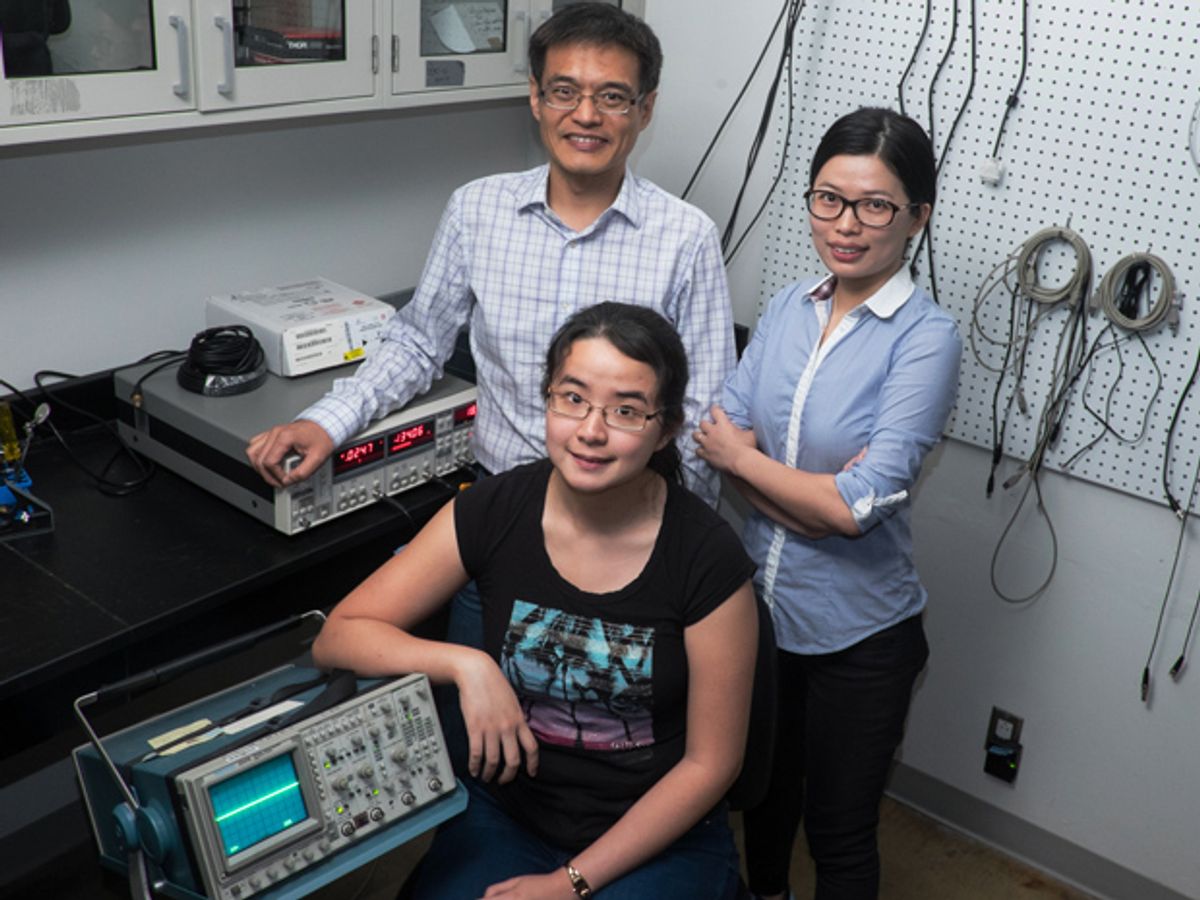Scientists have high hopes that the emerging field of plasmonics can improve technologies such as photovoltaics, LEDs, and other optoelectronics. It’s a natural fit: Plasmonics exploits the oscillations in the density of electrons that are generated when photons hit a metal surface.
However, it’s been studied in a bit too much isolation. Scientists have only looked at the phenomenon in isloated metal nanostructures and not the metal adhesion layer that glued the nanostructures to a metal substrate.
Now researchers at Rice University have expanded the understanding of plasmonics beyond just the nanostructure itself and down into the metal substrate. They expect that their increased ability to characterize and manipulate the plasmonic effect could make plasmonic devices viable alternatives for highly complex optoelectronic devices like optomechnical oscillators, which couple photons into mechanical resonators and are used in photonic and wireless communications applications.
“At this moment, we are not trying to replace conventional optomechanical oscillators with plasmonic devices because the optomechanical oscillator requires extra high quality while the plasmonic structure we have currently only has a decent quality factor,” explained Wei-Shun Chang, a postdoctoral researcher at Rice, in an e-mail interview with IEEE Spectrum. “However, the advantage to use the plasmonic nanostructures is that it is an excellent antenna to efficiently couple the photons into the mechanical oscillator. This property can potentially simplify the design of the optomechanical oscillator.”
In research published in the journal Nature Communications, the Rice team was able to further this long-term aim by establishing a relationship between acoustic phonons and plasmons. Plasmons are the waves of electrons that move along the surface of a metal after it’s been struck by photons. And acoustic phonons are the vibrations of the metal itself after being hit by photons.
Both phonons and plasmons have distinct frequencies depending on the kind of light that has generated them. The Rice team found that they could make a direct connection between the resonant frequencies of phonons and plasmons by using pulsed laser light.
In their experiments, the Rice team aimed pulsed laser light at gold nanodisks causing them to vibrate. The vibration of the gold nanodisks—the phonons—could be tuned by changing the thickness of the material to which the gold nanodisks were attached.
“The plasmons of a gold nanodisk is a collective oscillation of conduction band electrons,” explained Chang. “Illuminating the nanodisks with short light pulse impulsively launches the acoustic phonon modes. The acoustic vibration of nanodisk arises from the absorbed photon energy by surface plasmon and then transferred to the lattice. More energetic phonons correspond to larger vibrations of atoms within the gold nanostructure.”
Chang believes that this work could pave the way for future plasmonic structures that are far simpler than today’s current optoelectronic devices.
“Plasmonic nanostructure can act as antenna and mechanical oscillator and don’t require complicated design,” he said. “It can be as simple as a disk as shown in the paper. Plus, the size of the plasmon structures can be down to nanometer scale to minimize the size of the device.”
Dexter Johnson is a contributing editor at IEEE Spectrum, with a focus on nanotechnology.



